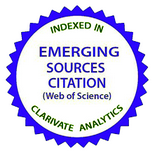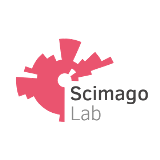Desalination of Seawater. Osmotic Process for “Blue Energy” and Estimation for Desalination
DOI:
https://doi.org/10.15407/ujpe69.12.905Keywords:
desalination, reverse osmosis, chemical precipitation, distillation, ion exchange, electrodialysis, osmosis, “blue energy”Abstract
Seawater, a vast resource, holds fresh water that is increasingly crucial in industrially developed countries. The demand for freshwater for domestic use, agriculture, and industry in these nations far surpasses the available supplies, leading to freshwater scarcity. Your invaluable work in water resource management and environmental science, which is pivotal in addressing this issue, is greatly appreciated. This issue is not limited to specific countries in places like Israel and Kuwait, where the level of precipitation is very low, and freshwater reserves do not meet the increasing needs due to the modernization of the economy and population growth. This global relevance underscores the importance of desalination technologies as a potential solution. As we explore the potential of desalination technologies, we are presented with a promising solution to water scarcity- the vast seas and oceans as alternative water sources. This potential is particularly significant in your field of research and expertise, underscoring the relevance of this paper to your work. The countries with the cleanest drinking water usually have large freshwater reserves in lakes, rivers, underground waters, and glaciers, providing a reassuring buffer against water scarcity. Brazil, for instance, benefits from abundant freshwater from the Amazon River and its extensive basin system. Canada boasts numerous lakes and river systems. The United States include large freshwater reserves in the Great Lakes, numerous rivers, and groundwater. Colombia has large freshwater resources, primarily due to numerous rivers and groundwater. Chile is rich in glacier water, further enhancing its water security. This diverse range of water resources underscores the need for desalination technologies to supplement these sources. In Europe, the Scandinavian countries Norway and Sweden have natural resources for clean drinking water from mountain rivers and lakes. Denmark is flat, but like the other Scandinavian countries, it maintains strict environmental policies and a high-quality water supply network. Germany has a well-developed water resource management system that ensures high-quality drinking water. German drinking water typically comes from underground sources, which are considered very clean, as well as from rivers and dams. There are many glacier sources and rivers in the Alpine countries of Austria, Switzerland, and Italy. Ukraine and Romania have large amounts of drinking water from the Carpathians. Bulgaria is rich in rivers and dams. It has 141 mountain peaks with heights of over 2000 m. Some countries have extensive natural resources that help them to provide the necessary drinking water for their citizens, although distribution and accessibility may depend on regional and economic conditions. The following countries have desalination technologies for clean drinking water from seawater – Saudi Arabia, United Arab Emirates, Israel, Singapore, Australia, Spain, and California (USA).
References
G. Micale, A. Cipollina, L. Rizzuti. Seawater desalination for freshwater production. In: Seawater Desalination. Green Energy and Technology (Springer, 2009).
https://doi.org/10.1007/978-3-642-01150-4
P. Webb. Salinity Patterns. Introduction to Oceanography (Roger Williams University, 2021).
Directive (EU) 2020/2184 of the European Parliament and of the Council of 16 December 2020 on the quality of water intended for human consumption.
I. Ignatov. Research of the factors of health and longevity of the population in Bulgaria. Bulgarian J. Public Health 10, 34 (2018).
I. Ignatov, N. Valcheva. Physicochemical, isotopic, spectral, and microbiological analyses of water from Glacier Mappa, Chilean Andes. J. Chil. Chem. Soc. 68, 5802 (2023).
https://doi.org/10.4067/S0717-97072023000105802
I. Ignatov. Review of different types of mountain springs and mineral waters from Bulgaria based on their natural origin and health benefits. Med. Perspekt. 51, 199 (2023).
https://doi.org/10.26641/2307-0404.2023.4.294236
I. Ignatov, I.K. Stankov. Parameters and effects of magnetic field and Potassium Carbonate in water. Applications. Ukr. J. Phys. 69, 321 (2024).
https://doi.org/10.15407/ujpe69.5.321
Bulgarian State Standard, Ceramic cylindrical filtering elements for chemical vessels and devices. Basic dimensions, BDS 7075.1968, 4.03.2022.
D. Mehandjiev, I. Ignatov, Neshev et al. History-dependent hydrogen bonds energy distributions in NaCl aqueous solutions undergoing osmosis and diffusion through a ceramic barrier. J. Chem. Technol. Metall. 58, 340 (2023).
https://doi.org/10.59957/jctm.v58i2.59
B A. Sharkh, A.A. Al-Amoudi, M. Farooque et al. Seawater desalination concentrate - a new frontier for sustainable mining of valuable minerals. Clean Water. 5, 9 (2022).
https://doi.org/10.1038/s41545-022-00153-6
T.S. Jamil, R.A. Nasr, H.A. Abbas et al. Low-cost, HighPerformance polyamide thin film composite (Cellulose Triacetate/Graphene Oxide) membranes for forward osmosis desalination from palm fronds. Membranes 12, 6 (2021).
https://doi.org/10.3390/membranes12010006
S. Lin, H. Zhao, Seawater desalination technology and engineering in China: A review. Desalination 498, 114728 (2021).
https://doi.org/10.1016/j.desal.2020.114728
F. Berenguel-Felices, A. Lara-Galera, M.B. Munoz-Medina. Requirements for the construction of new Desalination plants into a framework of sustainability. Sustainability 12, 5124 (2020).
https://doi.org/10.3390/su12125124
M.B. Baig, Y. Alotibi, G.S. Straquadine, A. Alataway. Water resources in the Kingdom of Saudi Arabia: Challenges and strategies for improvement. Edited by S. Zekri. In: Water Policies in MENA Countries. Global Issues in Water Policy, Springer, Cham. 23 (2020).
https://doi.org/10.1007/978-3-030-29274-4_7
Y.J. Lim, K. Goh, M. Kurihara, R. Wang. Seawater desalination by reverse osmosis: Current development and future challenges in membrane fabrication - A review. J. Membr. Sci. 629, 119292 (2021).
https://doi.org/10.1016/j.memsci.2021.119292
M.H. Sorour, H.A. Hani, H.F. Shaalan, G.A. Al-Bazedi. Schemes for salt recovery from seawater and RO brines using chemical precipitation. Desalination and Water Treatment 55 (9), 2398 (2015).
https://doi.org/10.1080/19443994.2014.946720
I.B. Silva, J.C.Q. Neto, D.F.S. Petri. The effect of magnetic field on ion hydration and sulfate scale formation. Colloids Surf. A: Physicochem. Eng. Asp. 465, 175 (2015).
https://doi.org/10.1016/j.colsurfa.2014.10.054
Z. Xiao, H. Guo, H. He et al. Unprecedented scaling/fouling resistance of omniphobic polyvinylidene fluoride membrane with silica nanoparticle coated micropillars in direct contact membrane distillation. J. Membr. Sci. 599, 117819 (2020).
https://doi.org/10.1016/j.memsci.2020.117819
B.V. der Bruggen, C. Vandecasteele. Distillation vs. membrane filtration overview of process evolution in seawater desalination. Desalination 143, 207 (2002).
https://doi.org/10.1016/S0011-9164(02)00259-X
Y. Choi, G. Naidu, S. Lee et al. Recovery of sodium sulfate from seawater brine using fractional submerged membrane distillation crystallizer. Chemosphere. 238, 124641 (2020).
https://doi.org/10.1016/j.chemosphere.2019.124641
A. Chafidz, E.D. Kerme, I. Wazeer et al. Design and fabrication of a portable and hybrid solar-powered membrane distillation system. J. Clean. Prod. 133, 631 (2016).
https://doi.org/10.1016/j.jclepro.2016.05.127
R. Hagemann, G. Nief, E. Roth. Absolute isotopic scale for deuterium analysis of natural waters. Absolute D/H ratio for SMOW. Tellus. 22, 712 (1970).
https://doi.org/10.1111/j.2153-3490.1970.tb00540.x
M. Simonato, F. Ricci, Ch. Cattozo et al. Deuterium-depleted water: A new tracer to label pulmonary surfactant lipids in adult rabbits. J. Mass Spectrom. 57, e4808 (2022).
https://doi.org/10.1002/jms.4808
L.G. Boros, I. Somlyai, G. Somlyai. Deuterium depletion inhibits cell proliferation, RNA and nuclear membrane turnover to enhance survival in pancreatic cancer. Cancer Control. 28, 1 (2021).
https://doi.org/10.1177/1073274821999655
F. Huang, Ch. Meng. Method for the production of deuterium-depleted potable water. Ind. Eng. Chem. Res. 50, 1378 (2011).
https://doi.org/10.1021/ie101820f
M. Cherif, I. Mkacher, L. Dammak et al. Water desalination by neutralization dialysis with ion-exchange membranes: Flow rate and acid/alkali concentration effects. Desalination. 361, 13 (2015).
https://doi.org/10.1016/j.desal.2015.01.024
T. Gettonsong. Ion-exchange resins for desalination applications. Chapter: Ion-exchange resins. Ph. D. Dissertation (University of New South Wales, 2021).
J. Shi, L. Gang, T. Zhang, S. Sun. Study of the seawater desalination performance by electrodialysis. Membranes 12 (8), 767 (2022).
https://doi.org/10.3390/membranes12080767
O. Petrov, N. Iwaszszuk, T. Kharebava et al. Neutralization of industri water by electrodialysis membranes. Membranes 11, 101 (2021).
https://doi.org/10.3390/membranes11020101
J. Shi, L. Gong, T. Zhang, S. Sun. Study of the seawater desalination performed by electrodialysis. Membranes 12, 767 (2022).
https://doi.org/10.3390/membranes12080767
S.E. Skilhagen. Osmotic power - a new, renewable energy source. Desalin Water Treat. 15, 271 (2010).
https://doi.org/10.5004/dwt.2010.1759
J. Feng, M. Graf, K. Liu et al. Single-layer MoS2 nanopores as nanopower generators. Nature 536, 197 (2016).
https://doi.org/10.1038/nature18593
N. Heine, M.R. Fagiani, M. Rossi et al. Isomer-selective detection of Hydrogen-bond vibrations in the protonated water hexamer. J. Am. Chem. Soc. 135, 8266 (2013).
https://doi.org/10.1021/ja401359t
I. Ignatov, M.T. Iliev, T.P. Popova et al. Meteorological data and spectral analyses of non- equilibrium processes in water during the total Solar eclipse of 11.08.1999. Ukr. J. Phys. 69, 85 (2024).
https://doi.org/10.15407/ujpe69.2.96
M.T. Iliev, F. Huether, I. Ignatov et al. Education of students on Physics and Chemistry with effects of water filtration. Modeling of water clusters and hexagonal structures. Eur. J. Contemp. Educ. 12, 1546 (2023).
Downloads
Published
How to Cite
Issue
Section
License
Copyright Agreement
License to Publish the Paper
Kyiv, Ukraine
The corresponding author and the co-authors (hereon referred to as the Author(s)) of the paper being submitted to the Ukrainian Journal of Physics (hereon referred to as the Paper) from one side and the Bogolyubov Institute for Theoretical Physics, National Academy of Sciences of Ukraine, represented by its Director (hereon referred to as the Publisher) from the other side have come to the following Agreement:
1. Subject of the Agreement.
The Author(s) grant(s) the Publisher the free non-exclusive right to use the Paper (of scientific, technical, or any other content) according to the terms and conditions defined by this Agreement.
2. The ways of using the Paper.
2.1. The Author(s) grant(s) the Publisher the right to use the Paper as follows.
2.1.1. To publish the Paper in the Ukrainian Journal of Physics (hereon referred to as the Journal) in original language and translated into English (the copy of the Paper approved by the Author(s) and the Publisher and accepted for publication is a constitutive part of this License Agreement).
2.1.2. To edit, adapt, and correct the Paper by approval of the Author(s).
2.1.3. To translate the Paper in the case when the Paper is written in a language different from that adopted in the Journal.
2.2. If the Author(s) has(ve) an intent to use the Paper in any other way, e.g., to publish the translated version of the Paper (except for the case defined by Section 2.1.3 of this Agreement), to post the full Paper or any its part on the web, to publish the Paper in any other editions, to include the Paper or any its part in other collections, anthologies, encyclopaedias, etc., the Author(s) should get a written permission from the Publisher.
3. License territory.
The Author(s) grant(s) the Publisher the right to use the Paper as regulated by sections 2.1.1–2.1.3 of this Agreement on the territory of Ukraine and to distribute the Paper as indispensable part of the Journal on the territory of Ukraine and other countries by means of subscription, sales, and free transfer to a third party.
4. Duration.
4.1. This Agreement is valid starting from the date of signature and acts for the entire period of the existence of the Journal.
5. Loyalty.
5.1. The Author(s) warrant(s) the Publisher that:
– he/she is the true author (co-author) of the Paper;
– copyright on the Paper was not transferred to any other party;
– the Paper has never been published before and will not be published in any other media before it is published by the Publisher (see also section 2.2);
– the Author(s) do(es) not violate any intellectual property right of other parties. If the Paper includes some materials of other parties, except for citations whose length is regulated by the scientific, informational, or critical character of the Paper, the use of such materials is in compliance with the regulations of the international law and the law of Ukraine.
6. Requisites and signatures of the Parties.
Publisher: Bogolyubov Institute for Theoretical Physics, National Academy of Sciences of Ukraine.
Address: Ukraine, Kyiv, Metrolohichna Str. 14-b.
Author: Electronic signature on behalf and with endorsement of all co-authors.

















